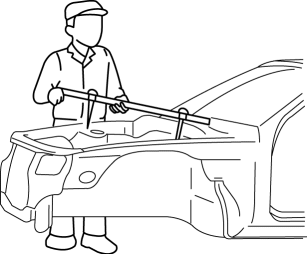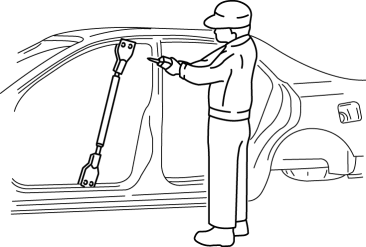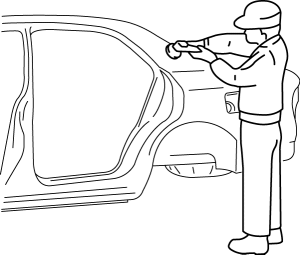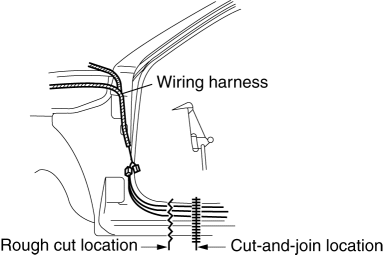Mazda CX-5 Service & Repair Manual: Efficient Removal Of Body Panels
Body Measurements
-
Before removal or rough?cutting, first measure the body at and around the damaged area against the standard reference dimension specifications. If there is deformation, use frame repair equipment to make a rough correction.

Prevention of Body Deformation
-
Use a clamp or a jack for removal and reinforce at and around the rough?cutting location to prevent deforming of the body.

Selection of Cut?and?join Locations
-
For parts where complete replacement is not feasible, careful cutting and joining operations should be followed. If the location to be cut is a flat area where there is no reinforcement, the selected cutting location should be where the welding distortion will be minimal.

Removal of Associated Parts
-
Protect moldings, garnishes, and ornaments with tape when removing associated parts.
Rough Cutting of Damaged Panel
-
Verify that there are no parts (such as pipes, hoses, and wiring harness) nearby or on the opposite side of a panel which could be damaged by heat.
-
For cut?and?join areas, allow for an overlap of 30—50 mm {1.2—1.9 in} and then rough?cut the damaged panel.

 Efficient Installation Of Body Panels
Efficient Installation Of Body Panels
Checking Preweld Measurements And Watching
Align to the standard reference dimensions, based upon the body dimensions
illustration, so that new parts are installed in the correct position.
...
 Energy Absorbing Form Removal/Installation
Energy Absorbing Form Removal/Installation
1. Disconnect the negative battery cable..
2. Remove the seal board upper..
3. Remove the front bumper..
4. Insert the flathead screwdriver shown in the figure, push fasteners A for
back side ...
Other materials:
Interior Equipment (View A)
1 Door-lock knob
2 TCS OFF switch
3 Tire pressure monitoring system set switch
4 Turn and lane-change signal
5 Lighting control
6 Instrument cluster
7 Dashboard illumination knob
8 Wiper and washer lever
9 Push button start
10 AFS OFF switch
11 BSM OFF switch
12 Outside mirror ...
Moonroof
The moonroof can be opened or closed electrically only when the ignition is switched
ON.
WARNING
Do not let passengers stand up or extend part of the body through the open moonroof
while the vehicle is moving:
Extending the head, arms, or other parts of the body through the moonroof is
da ...
Filament Repair
1. Clean the filament using isopropyl alcohol.
2. Attach tape to both sides of the filament.
3. Using a small brush or marking pen, apply silver paint.
4. After 2—3 min, carefully remove the tape without damaging the applied
area.
CAUTION:
Do not operate the rear window defro ...
